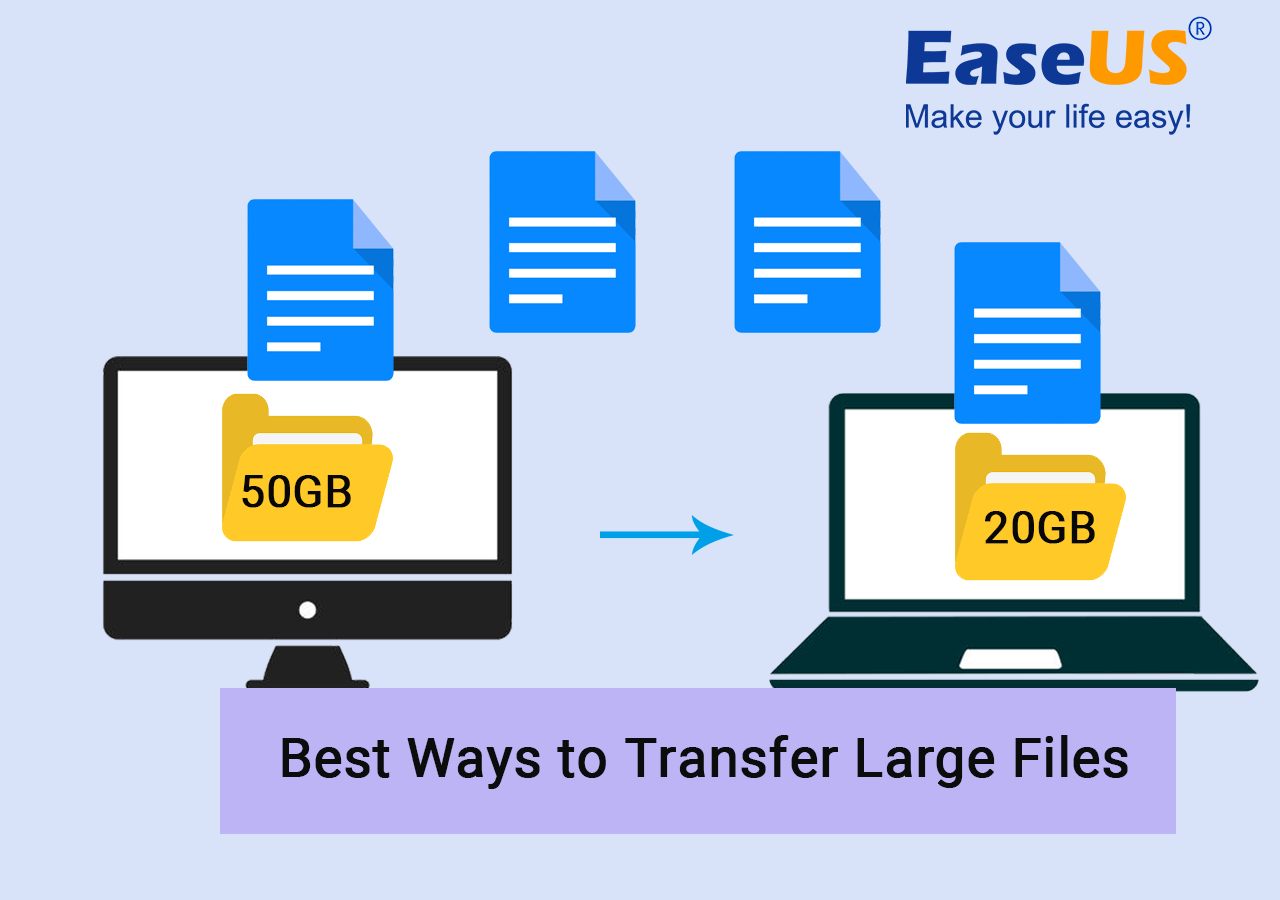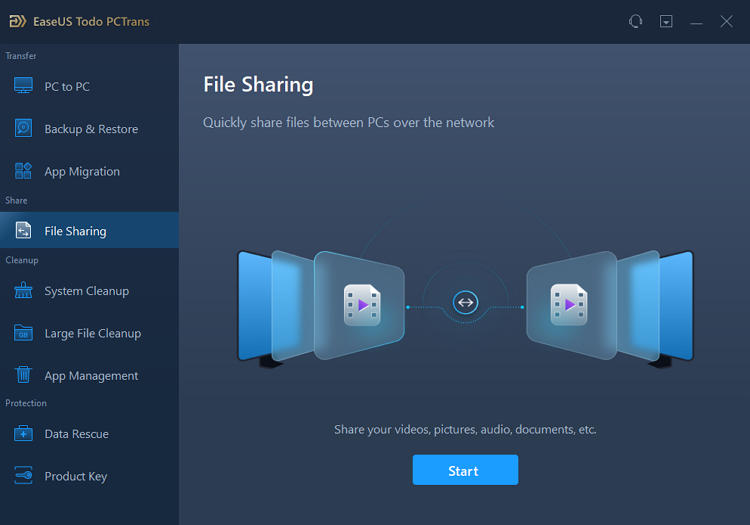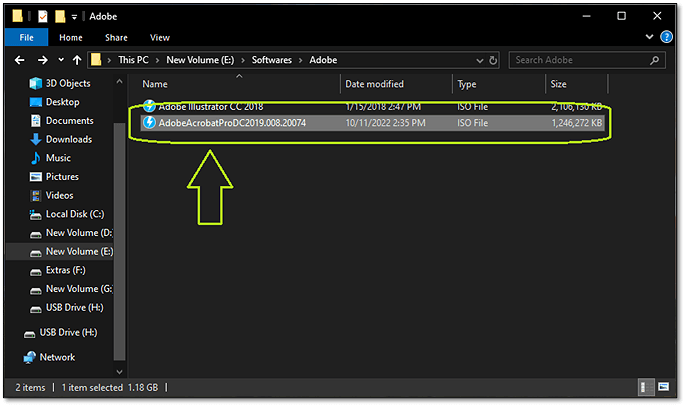Page Table of Contents
Reviews and Awards
In this article, you'll learn:
- What Is the Best Way to Transfer Large Files
- Top 5 Best Ways to Transfer Large Files
- Bonus Tip: How to Protect and Secure Large Files
Can I transfer large files for free? Yes, sure. Most online file sharing website or file transfer software offers a certain amount of file size to allow you transfer files for free. However, it highly depends on the file size limitation provided by different file migration tools. So, how to efficiently transfer large files can be a challenge for some non-tech people.

Sometimes the files can take too long, or the two devices just aren't quick enough. This gives a lot of IT technicians and common computer users some headaches.
Fortunately, there is a way around it, and some ways to transfer files are better. Follow and dive into this page, we'll show you the details here. Also, remember to share this online to help more people grab the idea of transferring and sharing large files efficiently:
Top 5 Best Ways to Transfer Large Files
There are different ways of transferring large files. Some files can be sent through emails easily, such as images, smaller videos, documents, etc. But, larger files can cause a lot of trouble when moving from one storage to another.
But, that doesn't have to be the case for you. As you can employ five of the best ways to transfer large files, which are:
- #1. Transfer Large Files with File Transfer Software
- #2. Transfer Large Files Using a USB
- #3. Transfer Large Files via the File Transfer Website
- #4. Transfer Large Files Using Cloud
- #5. Transfer Large Files Via FTP
File transfer software like EaseUS Todo PCTrans, which specializes in transferring larger files, will always be your best option. So, using a good-quality third-party tool should be the number one choice for moving large files.
On the other hand, transferring large files via the USB can make you run into a wall. Let's say you have a 32GB USB pen drive, what happens when you transfer a file over 50GB? That's when you'd need a USB hard drive or USB SSD drive—both of which can be expensive.
Then, you can use a file transfer website, but they'll cost you money. For instance, some websites will only allow you to upload until a specific limit, i.e., 10GB. After that, you'll have to buy a premium account to transfer larger files.
Then, you can either use Cloud storage or FTP file sharing—both of which have pros and cons of their own. So, let's continue exploring these five best methods to transfer large files.
#1. File Transfer Software - EaseUS Todo PCTrans
The first and perhaps the best method to transfer large files is with a file transfer software called EaseUS Todo PCTrans. This stellar tool is full of outstanding options, making it the number one choice for many IT technicians and common users.
It doesn't only offer the ability to transfer large files but entire apps and their configurations. This is widely hailed as the best tool to help you transfer larger files. Here's how you can use it:
Step 1. Install and open EaseUS Todo PCTrans on source and target PCs. Navigate to the "File Sharing" tab and click "Start" to begin.

Step 2. To build the connection between two PCs, you need to ensure both of them are under the same network. Then, choose the target PC icon or click "Add PC" and enter the other PC's connection code.

Step 3. Drag and drop the large files that you want to transfer. Then, you can see it in the Receive lists on the target PC.
| Pros | Cons |
|---|---|
|
|
What makes EaseUS Todo PCTrans so special in large file sharing? Here are a few reasons:
- It's exceedingly easy to use, meaning no complicated steps, configurations, etc.
- It offers outstanding options for file sharing between PCs, Laptops, etc.
- Allows you to move apps, including their settings and configurations.
These factors make it a remarkable option and the top choice to help you transfer files.
#2. Using a USB
The second step you have is to transfer large files between two devices using a USB. Now, you can use a USB pen drive or an external HDD, SSD, NVME, etc. The point is the device should connect to your PC through a USB cable.
Even if you use a hard drive or SSD enclosure that connects it through USB, that'll suffice. So, once you have connected it, here's how you'll use it to transfer large files:
- Connect your USB to your PC
- Head into File Explorer
- Go to the folder with the large file
- Click on the large file and press CTRL + V on your keyboard

- Next, head into the USB Drive

- Now press Control + V to begin copying

- Once the file has been copied, remove the USB device
- Then, connect the USB drive to another PC or laptop and repeat the process
- Done
And that'll help you transfer your files into a new PC, laptop, or server.
| Pros | Cons |
|---|---|
|
|
#3. Via File Transfer Website
There are plenty of websites that offer you the ability to transfer files. These websites will offer you a certain limit, such as 2GB or a max of 5GB for free. However, once you're through, you will have to either buy premium or find another method.
That's why, it's important to understand that you should use this method only for medium-level large files, such as 1-5GB. Once you pick the files, here's how to use a website file transfer method:
- Head to the file transfer website
- Browse your PC to select the file you wish to transfer

- Then type your email, your target email, and the file title

- Click on the Transfer button

- Wait for it to finish
- Done
This might take a while, but once done you'll receive the file to your target email and from there, you can download it on your new PC/device.
| Pros | Cons |
|---|---|
|
|
#4. Using Cloud
The fourth option you have is to use cloud storage to move large files. There are plenty of options in cloud storage, but the two best options you can use today are Google Drive and DropBox. Why is that? Because they don't slow your download or upload speed whether you have a premium account or not.
So, let's use Google Drive this time:
- Head to https://www.google.com/drive/
- Sign into Google Drive with your account.
- On the top right corner, click on New and then select File Upload

- Browse your PC and select the file you wish to upload

- Wait for the upload to finish

- Done
Once the file is uploaded, head to the other PC or Laptop then log into your Gmail account. Once done, go to Google Drive once more and right-click on the file, then click on Download:

This will begin downloading the file to your other PC.
| Pros | Cons |
|---|---|
|
|
#5. Via Network Sharing
Network sharing is another great option, and the last one we have on this list. So, using this method can help you transfer large files quickly. But, you have to ensure both the devices are connected to the same network/Wi-Fi or Router.
Then here's how you can share files with it:
- Head to the folder with the files you wish to share
- Right-click anywhere (not on the files) and head into the properties

- Head into Sharing tab

- Provide sharing credentials and click on the Share button with Administrative privileges

- Wait for it to finish

- Done
Once the main PC has shared the files, head to the other PC where you need those files. Then follow these steps:
- Press Windows + R and type the PC's IP address like this \\192.168.1.100.

- Once in, open the folder you wish to copy files from

- Copy and paste the file to your other device
- Done
This process will copy your files to your second device. Depending on whether you're using Wi-Fi or LAN, it'll take a few minutes.
| Pros | Cons |
|---|---|
|
|
What Is the Best Way to Transfer Large Files
Transferring a large file from one device to another can be difficult. As mentioned above, if you have two devices with parallel hardware, the transfer speed will be slow if you do it with a USB device.
How is that? Because the faster device will copy the files into USB storage quickly. But, the slower device will take its time copying from the USB. The same goes when the roles are reversed. Similarly, if the internet is slow, the online transfer can also be an issue.
Whereas local area network (LAN) sharing depends on the settings. So, it's important to find the best way to transfer large files, as it depends on many factors.
Here is a checklist and summary based the above 5 ways we tested, and you can decide which way trust for large file transferring on your own:
- ✔️For efficient online and offline large file transfer: use file transfer software like EaseUS Todo PCTrans for help.
- ✔️For non-technical offline large file sharing: use a USB or removable device.
- ✔️For remote large file transferring: try an online file transfer website or cloud drive.
Bonus Tip: How to Protect and Secure Large Files
Protecting larger files can be difficult, but it's not exactly difficult. If you take a few important precautions, you can secure your larger files. So, to help you do just that, here are a few bonus tips for you:
- Store large files in a single volume so no other files or folders meddle with them
- Create a backup of large files to the external hard drive and plug it in only when you need it
- Run a trusted antivirus software like Windows defender and set it to scan your PC weekly or daily
- Save your important files into another storage device, i.e. an additional internal HDD and unplug it, and plug it in only when needed
- Transfer it to a PC or Laptop that you don't usually use
- Create a backup using proper backup software to avoid future issues and hiccups
These are some of the few methods you can employ to secure your larger files. So, make sure you follow these tips properly.
Final Verdict
These are the five best methods you can use to transfer your larger files from one device to another. Hence, follow these steps, and use the EaseUS Todo PCTrans tool to transfer large files quickly, as that's the best of the five ways discussed in this article.
Not only will these methods help you ensure the safety of your files, but also help you recover them quickly if you need to.
FAQs about Large File Transfer
Looking for more answers? This section will answer your additional queries:
1. What is the best way to transfer large files?
The best way to transfer large files is through the help of EaseUS Todo PCTrans software. It offers a remarkably quick method of transferring files. And, it doesn't take half as many steps as the other available methods.
2. Can I transfer 15GB of files for free?
Yes, you can. You can use a USB drive with at least 16-32GB of storage. Or, you can use EaseUS Todo PCTrans software to transfer those files.
3. How can I transfer 20GB of files for free?
For this, you will need at least 32GB of USB storage or free space on an external drive. If you do not have that, then you'll have to use either EaseUS Todo PCTrans or the FTP file transfer option.
About the Author
Updated by Tracy King
Tracy became a member of the EaseUS content team in 2013. Being a technical writer for over 10 years, she is enthusiastic about sharing tips to assist readers in resolving complex issues in disk management, file transfer, PC & Mac performance optimization, etc., like an expert.
Reviews and Awards
-
EaseUS Todo PCTrans Free is a useful and and reliable software solution created to serve in computer migration operations, be it from one machine to another or from an earlier version of your OS to a newer one.
Read More -
EaseUS Todo PCTrans is by the folks at EaseUS who make incredible tools that let you manage your backups and recover your dead hard disks. While it is not an official tool, EaseUS has a reputation for being very good with their software and code.
Read More
-
It offers the ability to move your entire user account from your old computer, meaning everything is quickly migrated. You still get to keep your Windows installation (and the relevant drivers for your new PC), but you also get all your apps, settings, preferences, images, documents and other important data.
Read More
Related Articles
-
How to Transfer Files to a Flash Drive in Windows 10
![author icon]() Cedric/2024/12/04
Cedric/2024/12/04 -
Bluetooth File Transfer Not Completed? Quick Fixes Here
![author icon]() Sherly/2024/12/04
Sherly/2024/12/04 -
How to Move Valorant to Another Drive | 2024 Easiest
![author icon]() Cici/2024/12/04
Cici/2024/12/04 -
(Solved) Can't Uninstall Google Chrome from PC
![author icon]() Oliver/2024/11/29
Oliver/2024/11/29